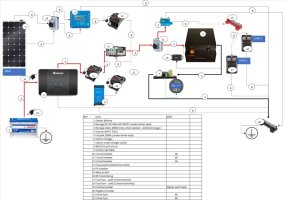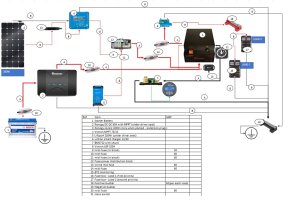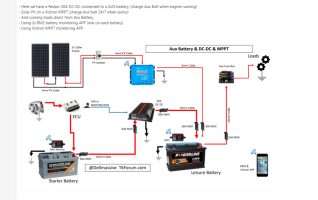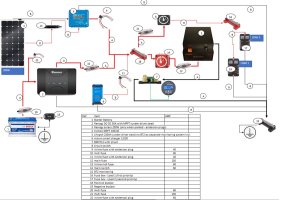Hey folks, I know this might cover some familiar ground, but I'm reaching out to tap into the collective wisdom of this community. I've put together the electrical diagram for my project, and I'd be truly grateful for your critical views and insights.
Relevant Details:
Feel free to dive into the details, share your experiences, or suggest any modifications you think would enhance the setup or simplify it.
Thanks a bunch for taking the time to lend your expertise!
A - 35mm, B - 6mm
Relevant Details:
- Leisure Battery: Tucked neatly under the driver's seat.
- AC: No plans for AC at the moment, but might consider it down the road (time will show)
- Charging Options: Looking to charge the leisure battery from the alternator, or solar panels (PV)/ mains power with the flexibility of on-demand charging when available or parked (so could be plug-in on demand for PV or mains).
- Connections: Are the connections for the leisure battery, solar panels, alternator and mains charger correctly depicted in the diagram or have I missed some?
- Fuse Sizes: Do the proposed fuse sizes for each connection point seem appropriate?
Feel free to dive into the details, share your experiences, or suggest any modifications you think would enhance the setup or simplify it.
Thanks a bunch for taking the time to lend your expertise!

A - 35mm, B - 6mm



